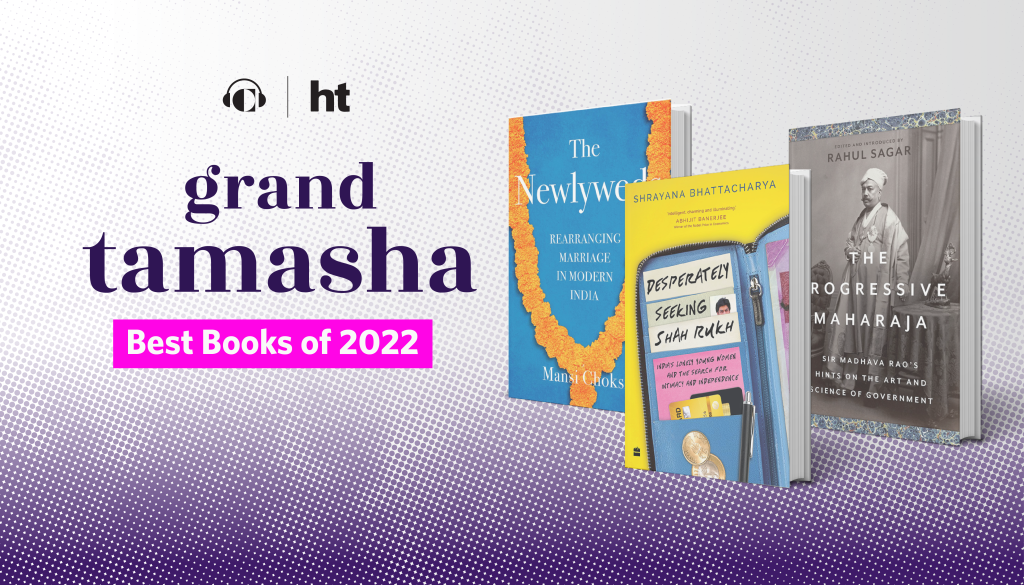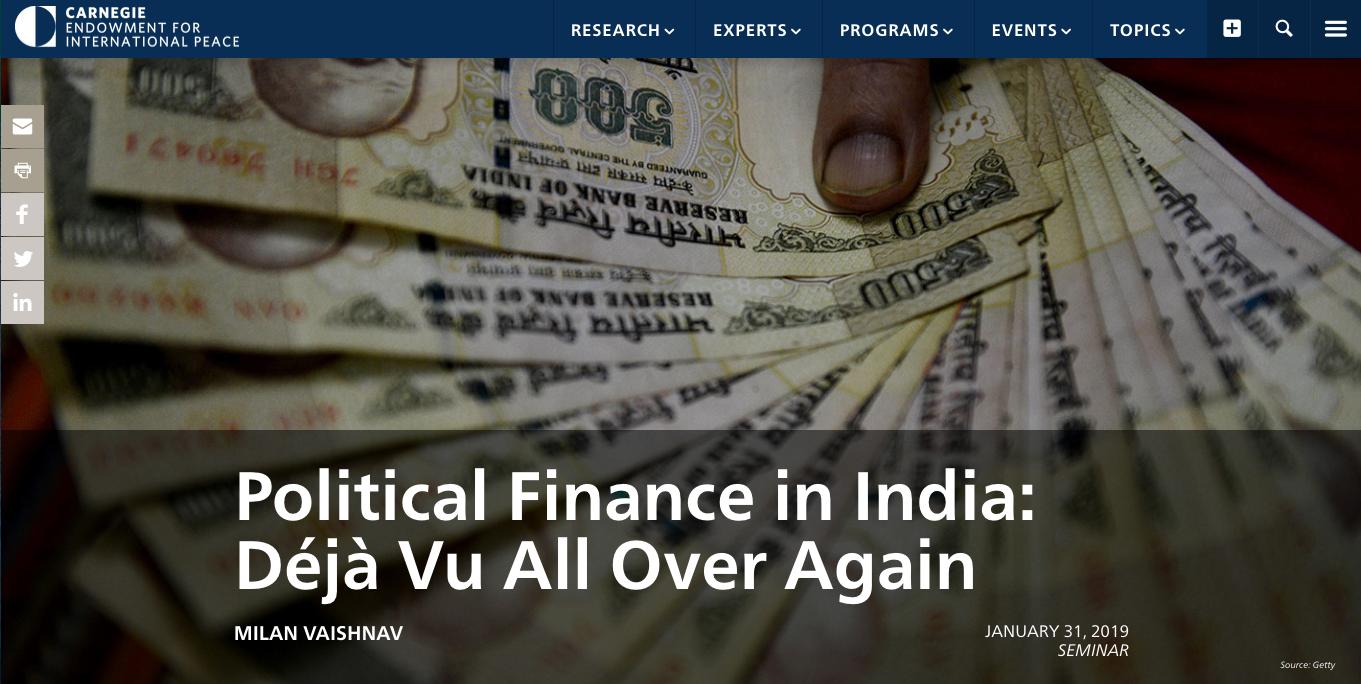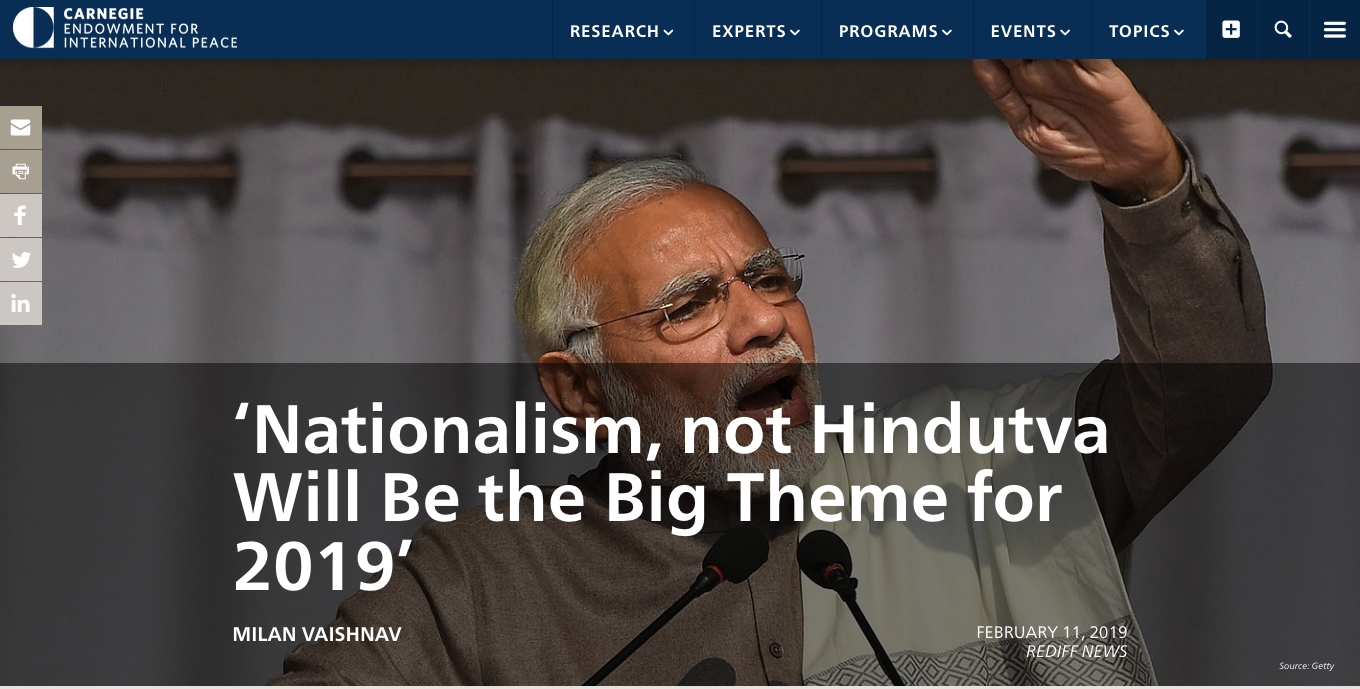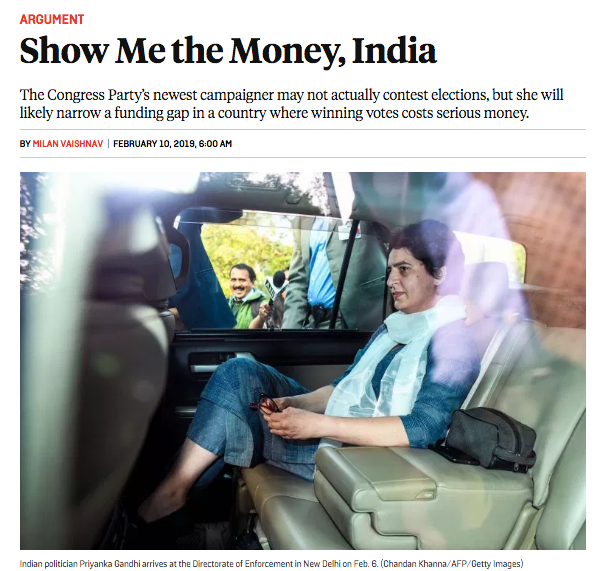I have a new essay in Foreign Affairs that distills some of the larger messages from our recent Carnegie report on religion, nationalism, and Indian democracy. Here is the punchline:
Whichever side emerges victorious in May, the consensus in India is that the Nehruvian construct of secularism is dead—killed by its one-time supporters as much as by its dogged opponents. What will replace it is unclear.
The full-text is here and below (ungated):
The Battle for India’s Soul
The Election Will Determine What Comes After Secularism
By Milan Vaishnav
On May 19, voting will end in the last phase of India’s mammoth general election. Over the five and a half weeks of the campaign, some 600 million voters will have trekked to the polls to select the 543 members of India’s next parliament. The ruling Bharatiya Janata Party (BJP) of Prime Minister Narendra Modi is seeking a second term in office. A motley crew of opposition parties—including the Indian National Congress, the once-dominant political force in post-independence India, and a bevy of regional players—hopes to topple it.
The stakes are high. The author-turned-politician Shashi Tharoor called the election “a battle for India’s soul,” and the political scientist and social activist Yogendra Yadav has argued that the “very idea of India is under challenge.” In the minds of many observers, this election will determine whether India has a future as a secular, pluralist republic true to its founders’ belief that its unity is strengthened by its immense diversity.
The campaign has seen its fair share of lows. On multiple occasions, India’s election commission has temporarily banned several top political leaders from campaigning over their incendiary, religiously divisive taunts. In particular, the BJP—an avowedly pro-Hindu nationalist party—has peddled inflammatory rhetoric about India’s Muslims, who make up nearly 15 percent of India’s 1.3 billion residents. On the first day of voting, BJP party president Amit Shah pledged that his party, if reelected, would “remove every single infiltrator from the country, except Buddha [sic], Hindus and Sikhs.”
The BJP chief was referring to the National Register of Citizens, a record recently established in the border state of Assam to distinguish between genuine citizens of India and undocumented Muslim migrants from neighboring Bangladesh. Inaugurated by the current BJP state government after a decades-long political debate, the NRC excludes more than four million people from its draft list of citizens, suggesting that mass deportation could be in order. Shah promised that a second-term BJP government in New Delhi would implement an NRC-like process for the entire country—doubling down on a pledge in the party’s election manifesto. The proposed national citizen registry complements another core BJP promise: legislation that would relax citizenship criteria for Buddhist, Christian, Jain, and Sikh refugees fleeing religious persecution across South Asia—or, in other words, basically anyone but Muslims seeking refuge in India.
Hindu nationalists allied with the BJP call for a Ram Rajya (a harkening back to a mythical golden age under the Hindu Lord Ram); the traditional proponents of secularism have not offered a compelling alternative. Rather, senior Congress leaders have gone to great pains to embrace their Hindu faith in order to blunt the BJP’s religious appeals. At the very moment when secularism is on the ropes, its defenders appear to have abandoned it.
For seven decades, political and cultural conflict in India has centered on competing visions of nationalism. The drafters of India’s post-independence constitution in the late 1940s debated the values and norms that should underpin the “idea of India.” According to the political scientist Ashutosh Varshney, three concepts of India had jostled for dominance since the emergence of the Indian national movement in the nineteenth century. The first was territorial, emphasizing India’s sovereign borders. The second was cultural, defining Indian society by the values of tolerance, pluralism, and syncretism. And the third stressed religion: different religious communities called India home, but to Hindu nationalists, the Indian nation was at its core a Hindu one.
The two nationalisms that dueled for superiority during the constitution-making process stemmed from different combinations of these notions. Although both were committed to India’s “sacred geography,” there the similarities ended. Secular nationalism stressed political pluralism, while Hindu nationalism championed Hindutva—the belief that India is fundamentally a polity by, for, and of the majority Hindu community.
After independence, in 1947, the Congress Party emerged as India’s dominant political force and defined the country’s modern identity through that secular nationalism. Under the tutelage of the country’s inaugural prime minister, Jawaharlal Nehru, India’s postcolonial leadership refused to privilege any one religion above the others—fearing that doing so would upend a fragile social compact.
India’s homegrown secularism is, however, distinct from the American variant centered on the strict separation of church and state. Instead, the Indian Constitution instituted a doctrine of “principled distance” whereby the state would embrace India’s many religious faiths without unduly favoring any one of them. The Constitution guarantees citizens religious liberty and freedom from discrimination, but it also provides ample grounds for the state to interfere in religious affairs. For instance, under the law, the state can administer schools and universities that impart religious instruction. The state can also legislate against religious practices it deems illiberal—from sati (a Hindu custom in which a widow commits self-immolation upon her husband’s death) to triple talaq (the Islamic practice which allows a husband to instantly divorce his wife by repeating the world “talaq” three times).
In practice, Congress politicians who championed the cause of secularism often manipulated religion when it was politically expedient to do so. In the late 1970s and early 1980s, Prime Minister Indira Gandhi wooed Sikh extremists in an attempt to defeat the Akali Dal, a party popular among moderate Sikhs. When Gandhi lost control of the Sikh extremists she was cultivating, she ordered the Indian Army to invade the Golden Temple, the Sikhs’ holiest site, where they resided. Gandhi was eventually assassinated by her Sikh bodyguards in retaliation for the Golden Temple debacle. Her murder triggered bloody anti-Sikh pogroms across Delhi aided by several prominent Congress politicians.
Gandhi’s successor, her son Rajiv, also engaged in religious favoritism out of cynical political compulsion. In 1985, the Supreme Court ruled in favor of Shah Bano, a Muslim woman contesting her husband’s divorce, declaring that Indian civil law superseded sharia law. Indian Muslims protested the rule and Rajiv Gandhi pushed legislation through parliament that effectively rewrote Indian civil law on Islamic divorce to comply with sharia.
These religious interventions opened up space for the rising BJP. On the back of a sustained campaign of ethnoreligious majoritarianism, the BJP finally took power in New Delhi in the late 1990s. Although the party returned to opposition between 2004 and 2014, its charge that secular parties have engaged in “pseudo-secularism,” or pandering to religious minorities, resonated, discrediting secular appeals and aiding the BJP’s resurgence under Modi.
Over the past five years, Modi and the BJP have struck a delicate balance on projecting Hindu primacy. The Modi government has deferred action on the core social issues that have long dominated the BJP’s cultural agenda, such as the building of a Hindu temple on the contested site of a former mosque in Ayodhya in the state of Uttar Pradesh or the repeal of a Constitutional provision which grants Jammu and Kashmir, India’s only Muslim-majority state, special autonomous status. Instead, the government has allowed majoritarianism to flourish at a subnational level.
In several BJP-ruled states, governments have rewritten textbooks to downplay Islamic contributions to Indian history. After winning elections in the states of Haryana and Maharashtra, BJP governments moved to strengthen laws banning the slaughter of cows. The cow protection movement—which has an ambiguous relationship to official state governments—has tried to enforce its will extrajudicially, leading to a spike in lynchings and vigilante justice.
As the electoral campaign nears its end, charges of pseudo-secularism have placed Congress and many of its allies on the back foot. Fearful of being labeled minority appeasers, Congress politicians have brandished Hindu credentials to blunt the BJP’s appeal. Some Congress backers contend that the party’s task is to convince the electorate that although Hinduism is fully compatible with liberalism and minority protection, Hindutva is opposed to both.
In trying to reclaim Hinduism from Hindutva, Congress is playing smart politics. In a country whose population is 80 percent Hindu, for a party to be labeled anti-Hindu is fatal. But the danger is that Congress is essentially engaging in a soft form of Hindutva itself, thereby ensuring that it remains subservient to the BJP. Even if abandoning secularism might make for good politics in the short run, it could eventually corrode Congress’ identity.
There are signs that this is already happening. In February, the newly elected Congress government in the state of Madhya Pradesh invoked the National Security Act to detain three Muslim men accused of cow slaughter. The act, originally intended to help prosecutors go after terrorists and other threats to national security, permits preventive detention and restricts defendants’ due process rights. Critics condemned the move as a grotesque application of the law’s powers.
The BJP’s campaign rhetoric suggests that, if reelected, the party will continue to force religious minorities to accept the state’s preferential treatment for Hindus. In 2014, the Modi-led BJP swept to power on promises of rapid economic growth, millions of new jobs, and clean governance. But the Modi administration has not fulfilled those pledges, so the party needs a new playbook. To that end, it has shelved economic appeals and rallied its supporters with nationalist tropes—out of desperation as much as ideological conviction.
How far BJP leaders push this line will depend on the scale of their electoral victory. Should the party win another outright majority, it will have wide latitude to redraw the boundaries between religion and politics, while a hung parliament and a coalition government would constrain its freedom.
If the opposition emerges victorious—which opinion surveys suggest is unlikely—things will be murkier. A tendency known as Hindu traditionalism could enjoy a resurgence. Whereas nationalists hold that Hindus’ demographic majority makes their faith the embodiment of Indian identity, traditionalists emphasize Hinduism’s cultural traits, such as the practice of Ayurvedic medicine and the linguistic preeminence of Hindi. Although Hindu traditionalists advocate for a cultural embrace of Hindu tenets, they do not share the hegemonic or anti-minority views more extreme nationalists harbor.
Whichever side emerges victorious in May, the consensus in India is that the Nehruvian construct of secularism is dead—killed by its one-time supporters as much as by its dogged opponents. What will replace it is unclear. In the battle for India’s soul, only one side has shown up ready to fight.





